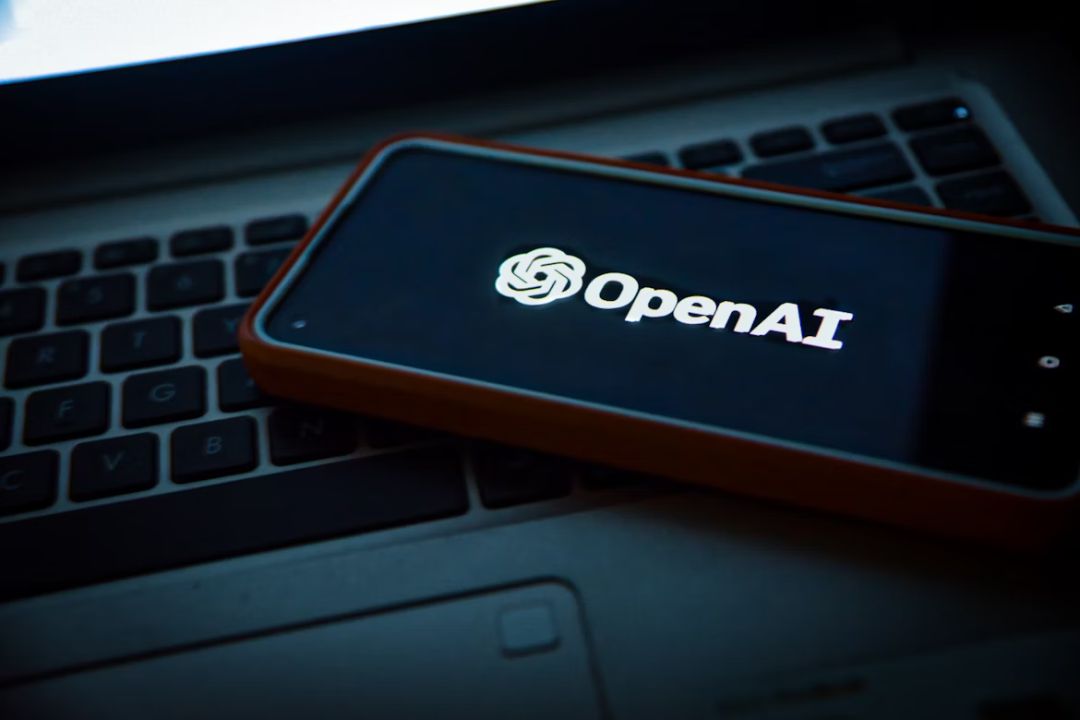OpenAI’s AgentKit Revolutionizes AI Agent Development
In a bold move that could redefine the way artificial intelligence is built and deployed, OpenAI has introduced AgentKit — a comprehensive toolkit designed to make AI agent creation and management faster, more accessible, and less technical for developers.
The announcement came on October 6, 2025, during OpenAI’s much-anticipated Dev Day event, where the company also unveiled new updates to ChatGPT, ChatKit, and Evals for Agents.
For years, developers have voiced frustrations over how fragmented and time-consuming it was to build production-ready AI agents. They had to manually orchestrate complex systems, design custom connectors, test endless prompt variations, and spend weeks refining front-end interfaces.
OpenAI’s new release aims to eliminate that pain once and for all.
“Historically, building agents involved wrangling disjointed tools, advanced orchestration with no version control, one-off connectors, and eval pipelines by hand,” OpenAI explained in its announcement.
“With AgentKit, developers can design workflows directly in the browser and integrate agentic UIs quickly.”
What Is OpenAI AgentKit?
AgentKit is OpenAI’s all-in-one framework for creating, managing, and deploying AI-powered agents — software systems capable of performing intelligent, autonomous actions on behalf of users or businesses.
Think of it as a developer-friendly construction kit for AI assistants, allowing teams to design everything from customer service bots to internal productivity assistants, all without needing to reinvent the wheel.
AgentKit combines three powerful components into a single ecosystem:
- Agent Builder (Beta) — a visual workflow editor for creating AI agent logic.
- Connector Registry — a centralized system to manage data sources, tools, and API integrations.
- Evals for Agents — advanced evaluation tools that test and optimize agent performance.
Additionally, ChatKit, another new tool unveiled at Dev Day, extends these capabilities by letting developers embed custom, branded chat experiences into their products.
1. Agent Builder (Beta): Visual AI Workflow Design
At the core of AgentKit is the Agent Builder, a visual, browser-based design environment that eliminates the need for complicated coding setups.
Previously, creating a working AI agent required building backend logic, manually setting up pipelines, testing prompt responses, and handling UI integration. The Agent Builder simplifies all that by giving developers a drag-and-drop workflow editor that visualizes how an agent makes decisions.
Key Features of Agent Builder
- No-code / Low-code design — Developers can visually connect steps in the agent’s workflow.
- Rapid prototyping — Build and iterate on agent logic in minutes.
- Version control integration — Keep track of workflow changes and test improvements.
- Browser-based UI — Everything runs directly in the cloud, no setup required.
This visual approach mirrors modern web development tools like Figma or Bubble — but for AI agents.
The Agent Builder is currently in beta, and OpenAI is inviting early developers to test it and provide feedback before full rollout.
2. Connector Registry: Centralized Data and Tool Management
Another critical feature of AgentKit is the Connector Registry — a powerful dashboard that manages all external tools, data sources, and APIs an agent interacts with.
In enterprise AI development, one of the biggest challenges has been keeping track of integrations. Businesses often run multiple agents, each connecting to different tools — CRMs, cloud storage, or analytics systems.
The Connector Registry provides:
- Central visibility into all integrations within an organization.
- Access control management to ensure security and compliance.
- Simplified configuration for shared connectors across projects.
Currently, OpenAI is rolling this feature out selectively to ChatGPT Enterprise and Education customers, as well as certain API partners.
This selective beta ensures that large-scale enterprise environments can safely integrate AgentKit into their existing infrastructure before general availability.
3. ChatKit: Build Custom Chat Experiences
ChatKit is another powerful tool released alongside AgentKit. It gives developers the ability to embed AI-driven conversations directly into apps, websites, or platforms — with complete branding control.
Instead of relying on OpenAI’s default chat UI, developers can use ChatKit to:
- Customize chat interfaces to match their product’s visual style.
- Integrate proprietary datasets and custom prompts.
- Deploy AI interactions that feel native to their own ecosystems.
ChatKit’s flexibility opens doors for industries like customer service, healthcare, finance, and education, where maintaining brand identity and user trust is crucial.
4. Evals for Agents: Smarter Testing and Optimization
To ensure agents perform reliably, Evals for Agents introduces an upgraded suite of testing tools designed for AI behavior evaluation and performance grading.
This module allows developers to test how agents make decisions, identify weak points, and automatically fine-tune prompts or workflows.
Evals for Agents includes:
- Pre-built datasets for automated testing.
- Trace grading to visualize an agent’s reasoning steps.
- Prompt optimization tools for efficiency and accuracy.
- Third-party model compatibility, ensuring flexibility beyond OpenAI’s ecosystem.
With these tools, developers can not only build agents faster — but also ensure that they learn, adapt, and improve in real-world environments.
The Rollout Plan: Beta, GA, and Enterprise Access
OpenAI’s rollout strategy for AgentKit and related tools follows a staggered approach:
- Agent Builder (Beta): Available now to selected developers for early testing.
- ChatKit & Evals for Agents: Fully available (GA) for all developers.
- Connector Registry: Selective beta for Enterprise and Education users.
This structured release ensures stability, scalability, and feedback collection before full global access.
OpenAI’s Larger Vision: From Chat to Action
The release of AgentKit aligns with OpenAI’s strategic pivot toward actionable AI — systems that don’t just talk but do things.
At Dev Day 2025, OpenAI also introduced the ability to access external apps directly from ChatGPT, further bridging the gap between conversation and action.
The company’s vision is clear:
“The future of AI isn’t only about more powerful models, but about making those models usable for developers everywhere.”
By focusing on tooling, integration, and deployment, OpenAI is laying the groundwork for the next era of AI applications — one where businesses can build real, functioning agents in hours instead of weeks.
Why AgentKit Matters for Developers and Businesses
The introduction of AgentKit signals a paradigm shift for both developers and enterprises.
For Developers:
- Reduced technical complexity in building agents.
- Faster prototyping cycles.
- Improved debugging and evaluation workflows.
- Seamless integration with existing OpenAI APIs.
For Businesses:
- Quicker rollout of AI solutions.
- Enhanced data governance via the Connector Registry.
- Scalable AI agent deployment across teams.
- Consistent brand experiences using ChatKit.
Essentially, OpenAI is democratizing AI agent creation, empowering even smaller teams to leverage cutting-edge AI without deep ML expertise.
Use Cases of OpenAI AgentKit
The potential applications of AgentKit are vast. Here are some real-world examples where it can make a difference:
- 🧠 Customer Support Bots — Automate responses, ticket handling, and FAQs.
- 🏢 Internal Productivity Assistants — Help employees with workflows, scheduling, and data retrieval.
- 💬 Personalized Chatbots — Tailor AI personalities for brands or creators.
- ⚙️ Automation Tools — Connect multiple apps for task execution without human intervention.
- 📊 Data Analysis Agents — Process business insights using company data connectors.
With AgentKit, these complex systems can be developed quickly, tested automatically, and deployed with confidence.
OpenAI’s Competitive Edge
AgentKit gives OpenAI a significant advantage in the AI tools race. While companies like Anthropic, Google, and Meta focus heavily on model performance, OpenAI is focusing on developer usability and integration — the real-world pain points that determine adoption.
By offering an ecosystem that simplifies both creation and deployment, OpenAI ensures that its tools remain the go-to platform for AI application development.
The Future of AI Agents
As we enter 2026, AI agents are expected to become mainstream in nearly every industry. From virtual shopping assistants to automated HR recruiters, these intelligent systems will handle both routine and complex tasks.
Tools like AgentKit could play a pivotal role in accelerating this future — by making the technology accessible, manageable, and safe for businesses of all sizes.
FAQs: OpenAI AgentKit and AI Agent Building
1. What is OpenAI AgentKit?
AgentKit is an all-in-one toolkit from OpenAI that simplifies building, testing, and deploying AI agents through tools like Agent Builder, ChatKit, and Evals for Agents.
2. Is AgentKit free to use?
Currently, the Agent Builder is in beta with limited access. Pricing details will be announced when it reaches general availability.
3. What is the purpose of the Connector Registry?
It centralizes all data and API connections, ensuring better control, access management, and scalability across an organization.
4. Can non-developers use AgentKit?
Yes. With its visual workflow builder, even non-technical users can design agent logic without deep programming knowledge.
5. What is ChatKit used for?
ChatKit enables developers to embed customizable, branded AI chat experiences directly into their products or apps.
6. How does Evals for Agents improve quality?
It allows developers to test, grade, and optimize agent behavior using built-in datasets, automated evaluations, and prompt optimization.
7. When will AgentKit be fully available?
The Agent Builder is in beta, but other components like ChatKit and Evals are generally available now.
8. Is AgentKit compatible with third-party AI models?
Yes, Evals for Agents supports testing with third-party models, not just OpenAI’s.
9. Will AgentKit replace custom AI development?
Not entirely — it complements it by simplifying the infrastructure and providing robust frameworks to speed up development.
10. What industries can benefit most from AgentKit?
Customer service, education, healthcare, fintech, and SaaS companies stand to benefit most from deploying AI agents efficiently.
Final Thoughts
OpenAI’s AgentKit marks a pivotal shift in the AI landscape — from focusing on building smarter models to empowering developers with smarter tools.
By merging simplicity with power, AgentKit democratizes the creation of intelligent systems that can act, learn, and evolve within real-world applications.
For developers, it’s the ultimate shortcut to building AI agents that are not only intelligent — but truly useful.
For businesses, it’s the bridge between AI innovation and practical implementation.
As OpenAI continues refining AgentKit, the future of AI will no longer be defined solely by breakthroughs in model performance — but by how easily anyone can build with them.

